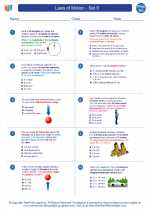Jejunum: Structure and Function
Anatomy
The jejunum is approximately 2.5 meters long and is characterized by a thicker wall and larger diameter compared to the ileum. It is composed of circular folds called plicae circulares and finger-like projections called villi, which increase the surface area for nutrient absorption.
Function
The primary function of the jejunum is to further break down food particles and absorb nutrients into the bloodstream. It absorbs nutrients such as carbohydrates, proteins, fats, vitamins, and minerals through the villi, which are rich in blood vessels and lymphatic vessels.
Role in Digestion and Absorption
Digestion
Enzymes from the pancreas and the intestinal wall continue the breakdown of carbohydrates, proteins, and fats in the chyme (partially digested food) that enters the jejunum from the duodenum.
Nutrient Absorption
The jejunum is the primary site for the absorption of nutrients. Carbohydrates are broken down into simple sugars and absorbed into the bloodstream, while proteins are broken down into amino acids and also absorbed. Fats are absorbed into the lymphatic system as fatty acids and glycerol.
Study Guide
Key Concepts
- Anatomy of the jejunum, including its length, structure, and features such as plicae circulares and villi.
- Functions of the jejunum in the digestion and absorption of nutrients.
- The role of enzymes in the jejunum in the breakdown of carbohydrates, proteins, and fats.
- The process of nutrient absorption in the jejunum, including the absorption of carbohydrates, proteins, and fats.
Study Tips
- Use diagrams and labeled illustrations to understand the anatomy of the jejunum.
- Understand the different types of enzymes and their specific roles in digestion within the jejunum.
- Compare the structure and function of the jejunum with that of the duodenum and ileum to gain a comprehensive understanding of the small intestine's role in digestion and absorption.
- Review case studies or clinical scenarios related to malabsorption disorders to understand the importance of the jejunum in overall health.
◂Physics Worksheets and Study Guides High School. Laws of Motion - Set II

 Worksheet/Answer key
Worksheet/Answer key
 Worksheet/Answer key
Worksheet/Answer key
